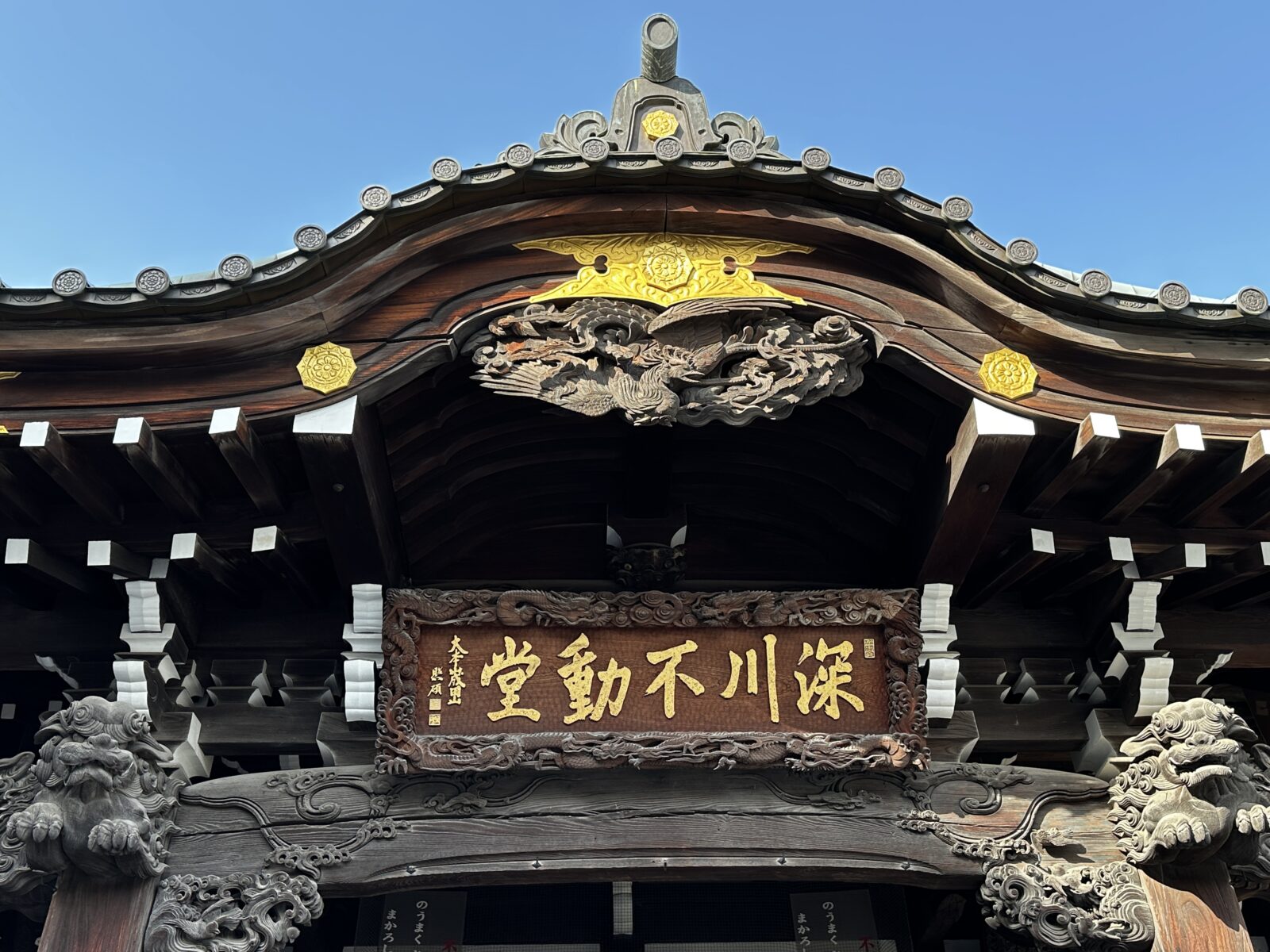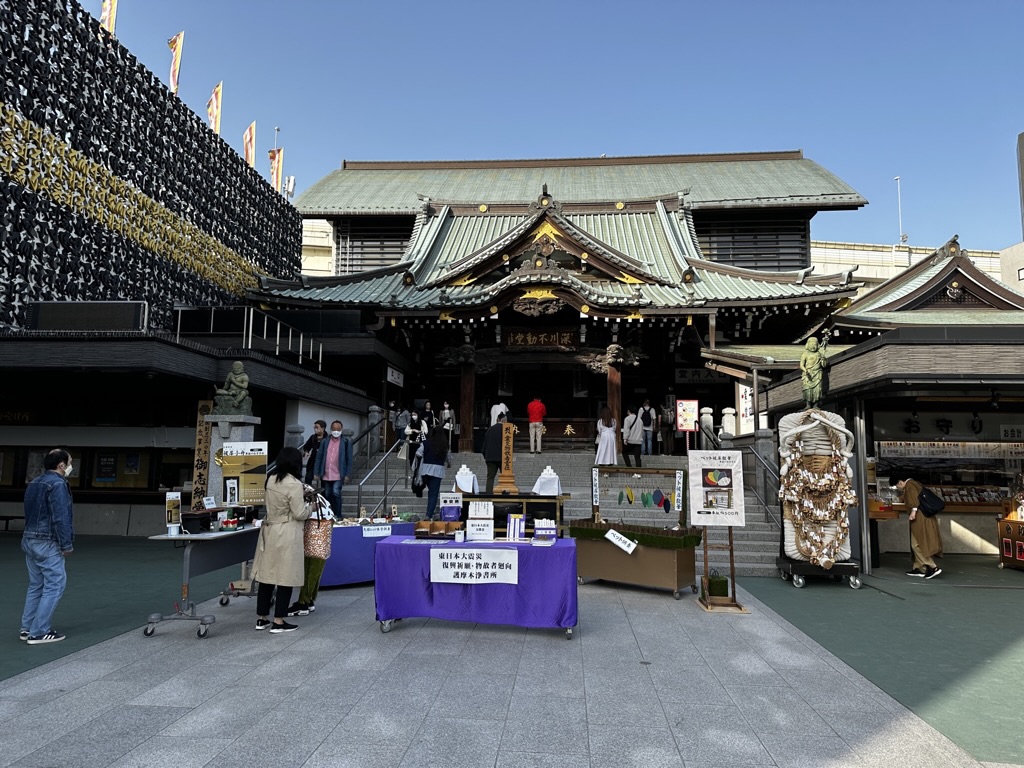About Japan, Secret Spots, To Sightsee, Useful Information
The most powerful spiritual site in Tokyo
If you come to Tokyo for sightseeing, Asakusa is not the only Buddhisit temple you should definitely stop by. Be sure to visit Fukagawa Fudoson, a little further east than Asakusa.
We affectionately call it ‘Ofudo-san’, but its official name is Naritasan Tokyo Betsuin Fukagawa Fudo-do. It is a Tokyo branch, so to speak, of Naritasan, an ancient temple near Narita Int’l Airport that is well known to overseas travellers.
The temple offers daily Goma, fire ritual at 9am, 11am, 1pm, 3pm and 5pm, which we would like you to experience. Goma is derived from the Sanskrit word “homa”, meaning holy flame, and is one of the tools used by the principal deity, Fudo Myoo(Acala wisdom king), to save all living things. Fudo Myoo has an indignant expression on his face as if he is chastising all living things which are overflowing with worldly desires, and he purifies them by burning them out with his flames.
The Goma starts with the entrance of monks blowing conch shells. Those of us who take part in the goma prayer listen to the sound of the big drums played by the monks and the chanting sutra and mantra, look at the sacred flame in which the Goma-wood with our wishes written on it is burned, and use all five senses as we continue to pray peacefully with our palms in one hand and our hearts in the other. The whole process of Goma is like a show, and it is sure to be a unique and precious opportunity for everyone to experience it.
Although the ceremony is originally intended for those who have paid a prayer fee to receive an ofuda amulet, even those who have not paid a prayer fee can enter the main hall and participate in the Goma. However, as this is a sacred event, hats and sunglasses must be removed when entering the hall, and it is strictly forbidden to raise one’s voice or take photographs with a camera or cellphone inside.
Since the Covid-19 spread, the Goma fire ritual has been reduced in time to about 30 minutes, but it is still an exciting enough experience for first-time visitors. The modernised hall is also made up of three floors, with a maze-like prayer path surrounded by small crystal pagodas and a dark room containing a condensed version of the 88 sacred sites of Shikoku, so it is like a Buddhist theme park, and a visit to each floor is highly recommended. You should also visit the guardian deity of your birth year. Many people don’t know their guardian deity, so if you let us know your date of birth via email or contact form, we will tell you your guardian deity. If you are not sure how to behave in this temple, please observe how people around you are doing and learn from them.
Oh yes, there is also a place near the entrance to the temple where you can float a piece of paper with your wishes on it in a small dragon god pond. Overall, the temple is a fun and friendly hands-on experience despite being a religious institution.
Finally, Goma times may vary during the temple’s annual events and on weekends, so if you can read Japanese, check the official website or, if you have a specific date and time you want to visit, email us at least one day in advance and we will check and get back to you.
Fukagawa Fudo-do Official Site



